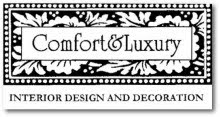
In the 1790's, the printing method called lithography was invented by a young German playwright who wanted a cheaper, faster way to publish his plays. Copper engraving and woodblock printing weren't getting the job done for him. His new technique was successful, but it wasn't until the mid-19th century that lithography's true impact on the world would be felt.

"The Color Explosion" brought me to The Huntington—250 objects on display from the private collection of J. T. Last, a prominent expert and author of the award-winning book the exhibit was named for. "We live today in a sea of color images, printed and electronic", writes Last, "and we find it hard to imagine a time when reproduction in color was a prized commodity".

By the late 1870's, improvements made to the original process of lithographic reproduction made it possible for printers to apply multiple colors to a single image. Sheet music was one of the first groups of materials to benefit from color printing and, as seen above and below, the earliest examples were finely detailed but the colors quite subtle. Further advancements in color lithography are directly related to the early history of advertising, branding and product packaging and it was in these areas that the explosion began and grew.

Can you imagine a time when everything, everywhere wasn't being presented and sold to us in bright, blazing color? Probably not. But if you were walking around in your corset and hoop skirt in 1875 and suddenly found yourself accosted at every turn by colorful advertisements, posters, handbills and packages it may have either delighted or dismayed you. So many things calling out for your attention. Did our great-great-grandparents believe that if they saw a product "in color" it was somehow superior? I'll bet many of them did.

Trade cards—smaller that a post card but larger than a calling card—became commonplace tools of "direct marketing" for everything from lawnmowers. . .

. . . to fish. To truly appreciate the significance of such throwaway items as trade cards, you have to understand something about the lithographic process. (I am not the person to explain it. Go here if you're really interested in the details.) Trust me though. The method may have been groundbreaking at the time, but it was still unbelievably tedious and required exacting standards and workmanship. One wrong move and your mackerel would look like mush. Failure in the middle of a twenty step process would certainly kill a printer's profits and, perhaps, his reputation.

As product manufacturers and distributors benefit from lithographic images, so did the merchants of consumer goods. For example, cigar box labels like this one. . .

. . .and this one, were pasted onto the inside of box lids. The boxes were then displayed open on store shelves, the bright images obviously meant to influence selection and purchase.

Book illustration too was transformed by this new, affordable process. Natural history books, children's books and gift books became popular. Full-color product catalogs enhanced the sale of merchandise and books on technical subjects like medicine and science could more easily convey complex information through color illustrations.

Color packaging became ubiquitous to daily life. Seed packets, canned food labels and the like became commonplace. Imagine the cereal aisle in your local market without all those brightly-colored boxes. How could we quickly tell the difference between the Kashi and the Lucky Charms if they were all in shades of black and white?

As color advertising became the preferred way to promote products, so too did it impact the business of event promotions. Posters printed in large quantities could be put up all over town or, as needed, throughout surrounding communities and even neighboring states to draw attendance from far and wide.

Lithographers used their new techniques to colorfully document history too. One of the items at the exhibit I liked best was this map of New York City from 1870. Click on the image below and you'll go to full-screen version. Go ahead, take a few minutes with it. It's fun.

Also fun, for me anyway, was seeing items that represent the history of my own region of Southern California. Throughout this area, at the turn of the twentieth century, towns were born from the burgeoning citrus industry. To identify their product, growers glued highly decorative, colorful labels to their packing crates before shipping them across the country. Here are three I snapped at the gallery (before a docent politely informed me that photography was not allowed—I swear I didn't see the sign!) from Ontario and Riverside, CA.


If you've read my blog for any time at all, you know that I am drawn to bright, happy colors (and lots of them!). I found this exhibit so interesting and I am so glad I took the time to see it and record it here. (Thanks for indulging me if this look isn't your cup of tea.) I can easily imagine designing a room inspired by any one of these images. Hey!. . . maybe I'll do just that and show it to you here. But first. . .
Next post: The gardens at The Huntington.

All images are my photos from the exhibit and garden or were scanned from the exhibit hand-out except: trade cards via the Harvard Business School Baker Library, world fair poster via Getty Images, and New York City map via history-maps.com







































































































10 comments:
Very interesting and I love all of the images, thank you for taking the time to do this wonderful post,Kathysue
Tracy your comment on my peach post made me laugh out loud!! You are so funny!
So great to see these images from the past!
You talking about color and asking if we could imagine everything in B&W made me smile. I thought about my dad who likes to watch old black and white movies. My mother, on the other hand, just doesn't get it. "Who wants B&W when you can have color," she asks. OK, I'm off point a little. oops.
This is a beautiful post, I love posters and sure wish I could find some of these at a reasonable price for my home...I am going to start looking...that rubber one especially takes my breath away!
I love the idea of using antique lithographs as art. My dad has quite the collection of football posters from the '20s ad '30s and I just love the colors....
and that peacock lithograph is fantastic! (a small detail to latch on to, I know, but I can't get enough peacocks lately...)
Tracy,
Wonderful post and images!!! I am so drawn to packaging...it' ashame the beauty of it is mostly gone. I especially wish canned goods had prettier labels! I buy this one brancd of pumpkin for the label...crazy, I know!
The first image would look so amazing framed up...especially in one of the houses I posted yesterday. Glad you liked them!
~Rebecca
These are fantastic! Love the colors! Hope to see you at the Rose Bowl!
Eddie + Jaithan
You little rule breaker you! Taking forbidden photos. :-) This was really an interesting post and I must admit it makes you stop and think about how much I take all of the fabulous color in our lives for granted.
Oops! Makes ME think, not you. :-)
I can well imagine the impact color printing made on people's lives... speaking as someone who can remember black and white TV, the difference is pretty awesome!
Post a Comment